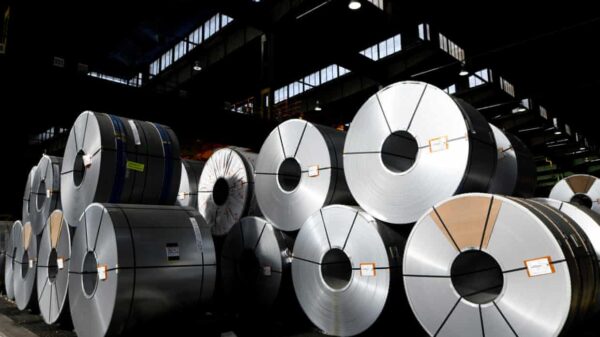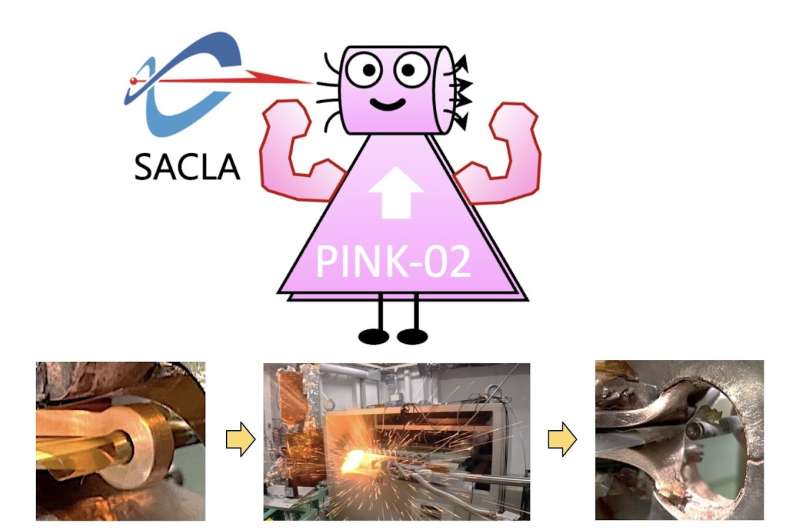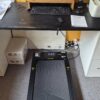Researchers from the University of Electro-Communications in Tokyo and RIKEN have successfully explored the crystal structure of solid oxygen when subjected to extreme magnetic fields of approximately 110 Tesla. Their findings, published on November 8, 2025, in the journal Physical Review Letters, highlight significant alterations in the material’s atomic arrangement during these intense conditions.
Applying magnetic fields above 100 Tesla presents unique challenges. Such fields can only be maintained for mere microseconds due to the immense stress they place on the wires generating them. This limitation has hindered previous research into the effects of ultra-high magnetic fields on various materials. To overcome this, the research team developed a portable magnetic field generator named PINK-02, enabling them to produce these extreme fields and analyze solid oxygen’s structural responses.
Innovative Techniques to Capture Atomic Changes
In their experiments, the team utilized ultrafast X-ray free-electron laser (XFEL) technology to observe the behavior of solid oxygen atoms during the magnetic pulse. This innovative combination of equipment allowed researchers to capture detailed snapshots of atomic positions, providing unprecedented insights into the atomic structure under extreme conditions.
“The primary goal of the study is to explore the extreme world of ultrahigh magnetic fields of 100–1,000 Tesla,” said Akihiko Ikeda, first author of the paper. “In the study, we conducted an X-ray experiment above 100 Tesla for the first time, which is significant in terms of exploring the frontier.”
By assessing the atomic arrangements before and during exposure to the 110 Tesla magnetic field, the researchers observed a significant phenomenon known as magnetostriction. This effect caused the crystal lattice of solid oxygen to stretch by approximately 1%. The findings indicate that under such intense magnetic conditions, the intrinsic spins of electrons can markedly influence the crystal structure of solid materials.
Implications for Future Research
The implications of this research extend beyond solid oxygen. The newly developed PINK-02 generator and the XFEL technology could pave the way for studying other materials under similar extreme conditions. The team plans to further investigate the crystal structure of solid oxygen, specifically targeting the θ phase, by increasing the magnetic fields to between 120 and 130 Tesla.
“Our findings demonstrate that spins can affect the stability of a material’s crystal structure, in the case of our study that of solid oxygen,” Ikeda noted. “We will now try to uncover the crystal structure change in various materials above 100 Tesla.” This research marks a significant advancement in the field of condensed matter physics, opening new avenues for understanding the behavior of materials under extreme conditions.
This article has been carefully reviewed and fact-checked, ensuring the reliability of the information presented. As scientific exploration continues to push boundaries, the developments in ultra-high magnetic field research may lead to groundbreaking discoveries in materials science.


































































